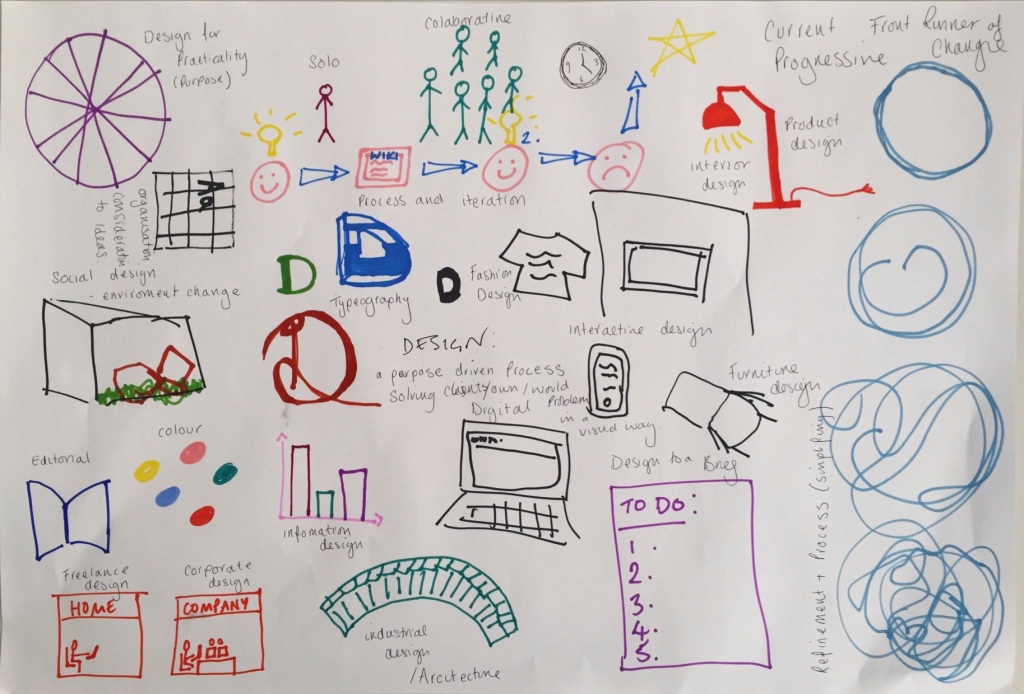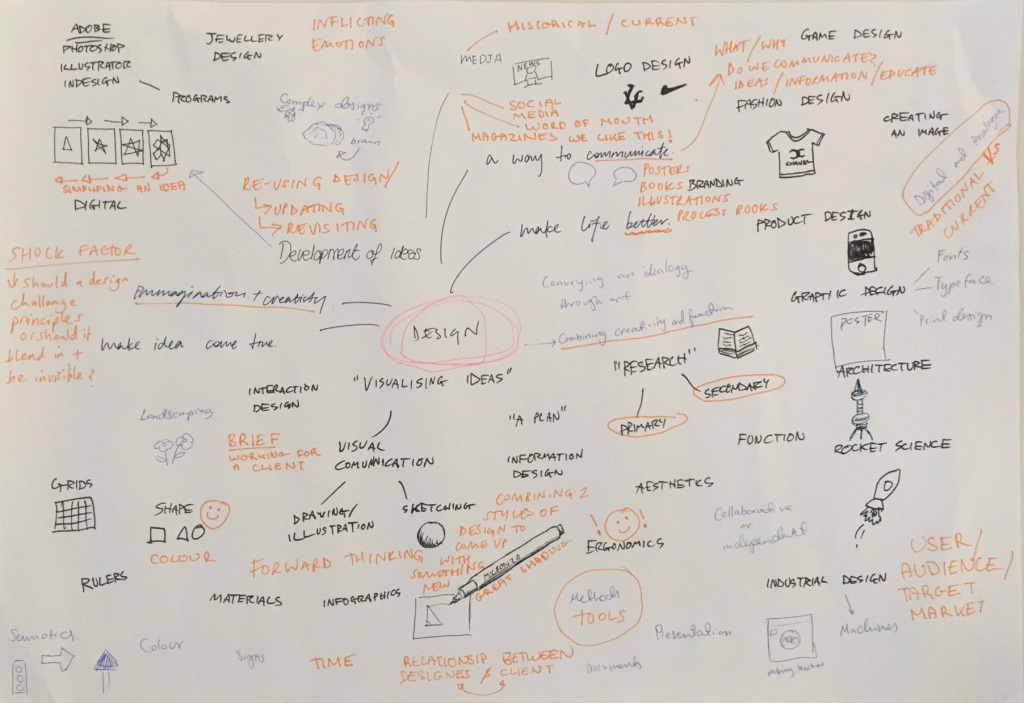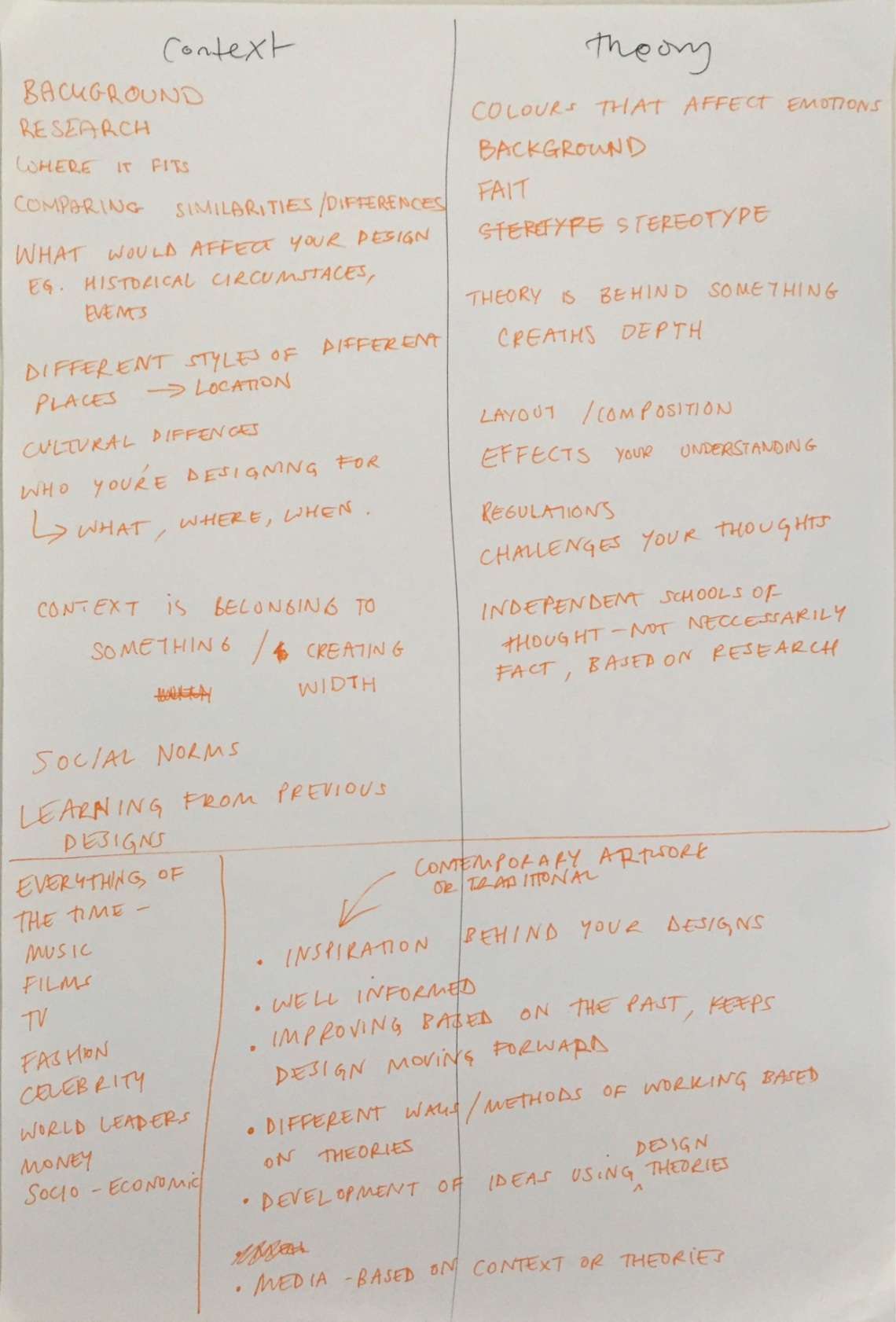In this workshop, we worked collaboratively to define the terms ‘Graphic’, ‘Media’ and ‘Design’, through group discussion and by visually recording our ideas. Initially, we discussed each term and their singular meaning and then moved on to consider how each relates to the other.
In our group, we looked at the term ‘Design’.
We talked about how design presents itself in many forms around us in the world: graphic, web, editorial, fashion, interactive and product design, to name but a few, and of how designers commonly use both analogue and digital media to comprise of their work. We discussed how design is a problem-driven process, aimed at finding a solution and engaging the user. We noted how design follows an iterative process, which can involve researching, idea generating, testing, refining and reflecting. One point which came up in conversation in our group which I found to be especially interesting, was how the word ‘design’ can be used as the term for the process of making and creating something, as well as referring to the final outcome.
We also acknowledged how design is, at its core, human-centric and focused on benefiting the end user. It has the power to challenge principles and encourage forward-thinkingness (such as a striking poster), yet in other cases, it can be unobtrusive and blend in (such as a well designed chair). Yet in both of these examples, the common goal of the designer is to innovate, through making things better, clearer, more efficient and more practical. Additionally, we reviewed the role of a modern-day designer, commenting on the responsibility to consider all elements of a design – such as function, aesthetics and economics – whilst contributing positively to society.


Following on from this, we reviewed the terms ‘Context’ and ‘Theory’ and discussed in our groups how they underpin Graphic & Media Design as a whole.
We summarised that context is made up of the set of circumstances that form the setting for something, e.g. the time, location, current affairs, politics and popular culture. As we launch into design processes on this course, researching the circumstances which surround a subject or situation will not only provide useful insights and give us a broader awareness of a topic, but it will directly inform and shape the nature of our work. Considering that one of the main objectives of Graphic & Media Design is to communicate a message to a user, I think it will be key for us to create work informed by context, as it will impact the user’s overall interpretation of the information presented and their understanding of a design. This level of understanding can also be used as a measure of success, for how meaningful and effective a piece of design work is.
After discussing our understanding of the term ‘theory’, we defined it to be a set of ideas which are used to explain something, based on research. Theories can encompass principles, thoughts or explanations conceived by designers of the past or present. Design theories can be applied to practical work as a mere starting point or as a strict framework and can therefore greatly influence the direction of a piece of work.
Later, I did a bit of research on ‘design theory’ and found this paragraph which I think sums it up pretty nicely. “Design theory involves an understanding of the tangible elements including form, space, proportion, colour, scale, texture, structure (grid), composition, line, shape and volume and how to arrange them to achieve balance, rhythm, pattern, hierarchy, emphasis, and unity. Design theory, blended with a purpose or problem to solve, results in effective design solutions”.

Bibliographical information
Lundgren, A. (2017). What is Design Theory? – Alvalyn Creative. [online]
Available at: https://alvalyn.com/what-is-design-theory/ [Accessed 18 Oct. 2017].